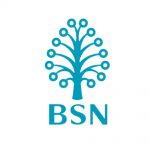Course Info
Python is a popular programming language that has gained attention for its ease-of-use and wide support for a variety of tasks. This introductory course is aimed at business professionals who are interested in conducting data analysis using Python. Ideal for first-time programmers, this course spans 3 days and covers the basics of loading data, performing basic exploratory analysis, and generating visual reports.
What Will I Learn From This Course?
Utilize the Jupyter notebook environment to generate interactive reports detailing data exploration.
Import data from flat files and perform some basic analysis using Pandas methods.
Generate visuals to communicate the results from (2) using Seaborn.
Pre-Requirements
None. Prior programming experience would be an added advantage, but is not a requirement.
Technical Requirements
The class will be conducted using Jupyter interactive notebooks. Participants are required to install Anaconda Python v3.8 prior to attending this course. We recommend a machine running MacOS/Unix/Windows with at least 4GB RAM.
Course Outline for This Programme
Introducing Python
– The Jupyter Notebook environment
– Interpreter behavior
– Jupyter magic commands
– Markdown typesetting
– Basic debugging
We begin by introducing the Jupyter Notebook environment that will be used to interact with the IPython interpreter. We will also cover the basics of Markdown typesetting for producinginteractive reports and debugging basics to pinpoint and troubleshoot code issues.
Basic Commands
– Variables
– Data Types
– Arithmetic operations
– String operations
In this section, we introduce the concept of variables for storing information and the general data types that Python supports. This is followed up by an introduction to some basic operations on numbers and text that form the basis for more advanced data manipulation.
Control Structures
– If, If-else, and If-elif-else conditions
– For and While loops
Control structures form the basis of more advanced tasks in Python. In this section, we cover some basic control structures and see how they are used to make decisions within a program and/or repeat tasks as necessary.
Working with Data (Part I)
– Python data structures
– Dictionaries and Lists
We introduce the basics of data storage in Python and drill down into two commonly used data structures – dictionaries and lists. Participants will learn to store, update, and retrieve information from both these structures for subsequent analysis.
Working with Data (Part II)
– Pandas data frames
– Importing data
– Cleaning data
– Numpy commands
– Lambda functions
– Aggregating data
– Summarizing data
– Reshaping data into long/wide formats
– Exporting data
Pandas commands make up the bulk of data manipulation in Python. In this section, participants will learn how to load data from flat files into Pandas data frames and manipulate said data to create summary statistics for analysis. We will also make use of glob to search for files within folders to import, allowing for batch processing of data.
Data Visualization with Seaborn
– Bar Charts
– Line Charts
– Scatter Plots
– Boxplots
– Customization using Matplotlib commands
Python supports a rich library of visual tools to support data visualization tasks. During this session, participants will learn to use Seaborn to generate beautiful visualizations to effectively communicate the results of their analysis.
Practice Project
– Live coding exercises on a Kaggle dataset
In the final section for this course, participants will get their hands dirty by working on a publicly-available dataset to simulate a real-life data workflow and put their Python knowledge to the test.
Introducing Python
– The Jupyter Notebook environment
– Interpreter behavior
– Jupyter magic commands
– Markdown typesetting
– Basic debugging
We begin by introducing the Jupyter Notebook environment that will be used to interact with the IPython interpreter. We will also cover the basics of Markdown typesetting for producinginteractive reports and debugging basics to pinpoint and troubleshoot code issues.
Introducing Python
– The Jupyter Notebook environment
– Interpreter behavior
– Jupyter magic commands
– Markdown typesetting
– Basic debugging
We begin by introducing the Jupyter Notebook environment that will be used to interact with the IPython interpreter. We will also cover the basics of Markdown typesetting for producinginteractive reports and debugging basics to pinpoint and troubleshoot code issues.
Background – Microsoft .NET Framework
James has more than 10 years of software development experience working in a software house. He has developed multiple solutions on different platforms, including Web, Desktop, and Server. He has started developing solutions using the Microsoft .NET Framework technology since 2002. He has also developed and implemented Document Management Solutions with document routing, Construction Site Safety Processing Solutions for Government Agencies, Human Resource Management Assessment Solution on Balance Score Card and Recruitment Assessment.
Background – Microsoft SQL ServerJames has substantial experience using Microsoft SQL Server version 6.5 for RDBMS solution development and deployment. He has also developed multiple Business Intelligence solutions using Microsoft SQL Server BI components since 2002. Microsoft SQL Server is his first choice on any solution development, like Digital Bill Conversion for Telco Corporate Users Solution, Human Resource Management Assessment Solution on BI for Performance Analysis, etc.
Background – Microsoft AZUREJames has trained and consulted AZURE solution for 5 years. He has been following azure technology closely. Since 2019, he was also one of the trainers pointed to deliver the AZURE training content for the MICROSOFT AZURE Training project in APEC. He has helped to deliver the content to MICROSOFT clients like AXA (Hong Kong), P&G (Philippine), SAP SA (China) etc. He also provides numerous training to T System (Malaysia). He also trains and consults AZURE Solution Architect, AZURE Data Science Solution and AZURE Service Development.




